Better Than Star Trek
Next Generation (Gregg Easterbrook, TNR)
One of the endearingly goofy things about “Star Trek” is that although it’s set in the twenty-fourth century, and Earth can build enormous faster-than-light spaceships, when our heroes beam down to danger on a planet, they wear pajamas and carry only radios, tricorders, flashlights, and sidearms. You’d think, it being the twenty-fourth century, that they’d be accompanied by battle robots and floating drones. Having the crew constantly render itself defenseless is a plot necessity, of course–the standard “Star Trek” episode entails someone walking directly into a trap, then having to be rescued.
But while warriors of the twenty-fourth century may wander around with nothing but pistols, the twenty-first century is going to be different. Surprisingly soon, much of the U.S. military may go into combat accompanied by battle robots and floating drones.
Considerable press attention has focused on Predator and Global Hawk, two drone aircraft used for reconnaissance and, occasionally, to deliver small missiles during U.S. attacks on Afghanistan and Iraq. But the Predator flies thousands of feet above soldiers, and is controlled by distant intelligence agencies, not by combat units. Global Hawk is a an enormous jet-powered contraption larger than a Cessna fourseater; Global Hawk cruises as high as 65,000 feet, twice the cruise altitude of a commercial jetliner.
But unlike these two forerunners, the next wave of remote-controlled or autonomous devices will operate close to troops, if not alongside them. Already, special operations forces in Afghanistan are using Pointer, a ten-pound flying drone that resembles a fancy model airplane. Soldiers carry Pointer and its control kits in backpacks. When they want to see what’s on the other side of a hill, or peer inside a compound, they launch the drone by hand–it has a quiet battery-powered motor–and steer it to the target, from which it sends back video images. U.S. forces in Afghanistan have also used Exdrone, a larger, longer-range drone launched off a truck.
And the drones are only going to get smaller. The Defense Advanced Research Projects Agency (DARPA), a part of the Pentagon, is working on Wasp, a mini-drone that weighs only six ounces and is about the size of a piece of paper. Wasp theoretically could fly around a battlefield almost unnoticed, and even fly into buildings, all while broadcasting images. So far, Wasp is too pricey to mass-produce. “There has been resistance to paying $70,000 for what appears to be a small toy,” the trade publication Aviation Week and Space Technology noted dryly. But if the price falls every field commander will want the device.
John Kerry voted for all these weapons…before he voted against them.

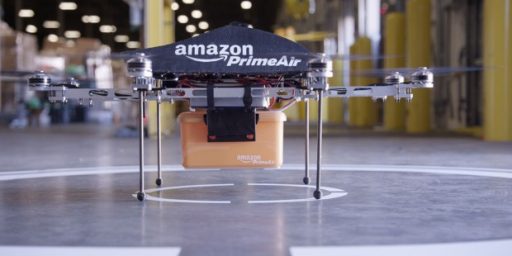
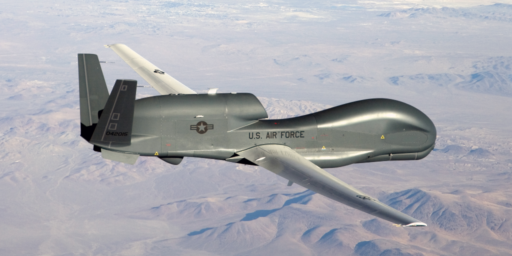
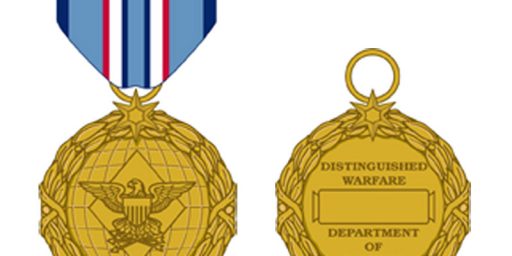
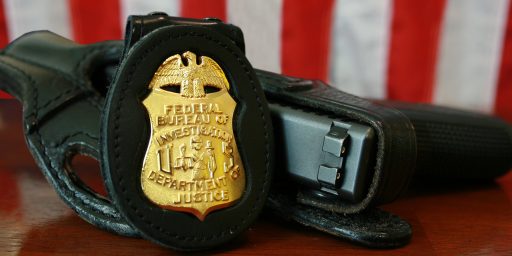
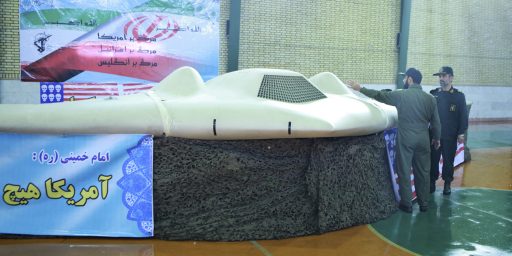
Shouldn’t that be TNR next his name rather than NRO? I don’t think Easterbrook writes for NRO.
Yep. I had it NRO for “New Republic Online” but I don’t think they actually use it that way.
Heh. I think we all know what happens when you create combat robots in Sci-Fi.
Maybe we should ask how much good all these toys are going to do AFTER the “mission” has been “accomplished” before we blame John Kerry for voting against them. After all, further up the blog you point out how few casualties our 21st Century forces are already sustaining.
I think the guys and gals currently over there would prefer better body armor to predator drones at the moment, and I know the generals have constantly lamented (when not muzzled)the lack of troop numbers.
And even on Star Trek the point of beaming down was usually not to go to war, but to explore and make peaceful contact. A predator drone or its grandchildren really can’t do that for you.